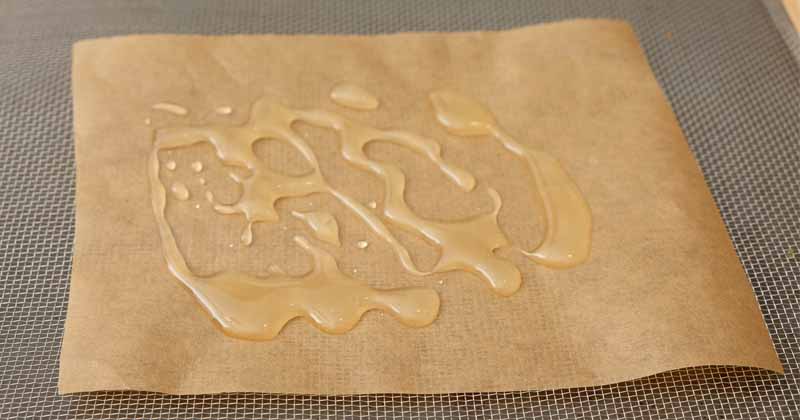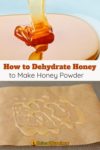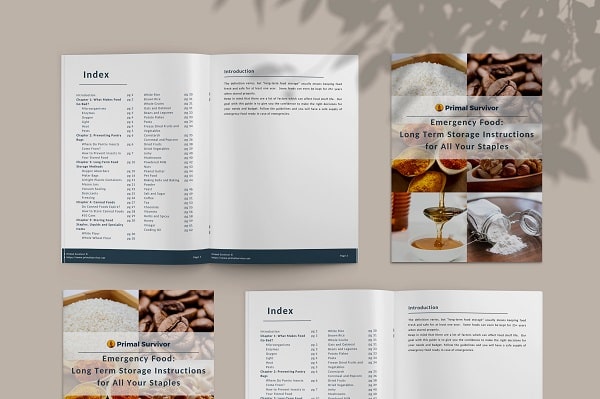Dried honey powder has recently become popular, especially with preppers. The honey powders you’ll find for sale in stores are far from real honey, though.
If you thought of dehydrating your own pure honey powder, be warned that you are in for a struggle.
Here’s what you need to know before making honey powder at home.
Why Would You Even Want Dehydrated Honey Powder?
The reason for dehydrating most foods is to keep them from going bad. Honey can be stored forever, though, so dehydrating it into a powder won’t help it last any longer. But you may want honey powder is because it:
- Weighs less
- Takes up less space on your shelves
- Is more travel-friendly
- Sometimes used in recipes or DIY beauty products like skin scrubs
How Much Space Does Honey Powder Really Save?
If your main reason for dehydrating honey is to save space, then you should know that real honey only contains about 13%-18% water. If you are pressed for space, then choosing powdered honey could save room on your shelves.
These space-savings don’t compare to other dehydrated products, though. For example, fresh veggies typically contain over 90% water, whereas dehydrated veggies contain less than 10% water. Storing dehydrated veggies instead of fresh or canned will save you a lot more shelf space than you gain with honey powder.
If space savings is your primary goal, you should probably focus on shrinking other products and not honey. Read these tips for prepping in an apartment.
Store-Bought Honey Powder Is Not Pure Honey
I’ve read the ingredients of many brands of honey powder and granulated honey products. Every single one of them contains ingredients other than honey.
Usually, the additional ingredient is maltodextrin, a starchy carbohydrate that comes in powdered form. Sometimes the additional ingredients are straight-up sugar.
In this honey powder by Hoosier Hill Farm, for example, the first ingredient is sugar. Likewise, the first ingredient in this honey powder by Hibbee Golden Cactus is cane juice.
You have no way of knowing how much of the product is actually honey versus added sugars – there could be less than 5% or even 1% honey in the product!
Since sugar is already a powder, it goes against reason to buy a “dehydrated” product which is mostly sugar. If you need something healthier than real sugar, consider coconut sugar — it is also a granulated powder.
Can You Dehydrate Pure Honey?
Yes, it is possible to dehydrate pure honey. However, because the natural sugars in honey trap moisture, it is hard. This is why most manufacturers add sugar, maltodextrin, and other additives to the honey before drying.
Commercial producers also don’t use normal dehydrators to make their products. Rather, they also use a spray-drying process (fun fact: this is also how dried eggs are made). A group of researchers built such a machine to dry pure honey. Even after 10+ hours of drying at high heat on the special machine, the honey didn’t get to below 15% moisture! And most people don’t have access to these types of machines at home.
How to Make Honey Powder on a Home Dehydrator

I tried dehydrating honey at home, and it didn’t work. After 24 hours, I weighed the honey, and it hadn’t even lost 1 gram of its weight! I gave up after two days. However, a few people in online groups have had success turning honey into a powder on their dehydrators. It just takes forever.
Still, want to make honey powder at home? Here is what you will need to do.
- For best results, use crystallized honey. Honey crystals are made of glucose which has separated from the fructose and water in honey. Because they have already separated, the honey dehydrates more readily.
- Spread thin layers of honey on small sheets of parchment paper.
- Put the parchment paper in your dehydrator.
- Dehydrate the honey until it becomes hard. It will probably take 72+ hours!
What Temperature Do You Need to Dehydrate Honey?
You’ll need to set your dehydrator to at least 95F to dehydrate honey. At this temperature, though, it will probably take a VERY long time to even slightly reduce the moisture content of honey. After about 24 hours, you’ll have a goopy syrup but nothing resembling powder.
Increasing the drying temperature will make the honey dry faster. However, high temperatures destroy the healthy properties of honey.
As talked about here, heating honey to 98.6F causes the loss of nearly 200 components – including antibacterial components. At temperatures of 104F, the enzyme invertase in honey is destroyed. At 122F for 48+ hours, the honey will turn to caramel.
Storing Honey Powder
Another issue with honey powder is that it will start to absorb moisture from the air. It can also absorb bad odors from the surrounding area. You will need to store it the same way you store brown sugar.
The Verdict on Honey Powder?
Commercial honey powders are mostly made up of sugars with very little real honey, so don’t waste your money on them. You could dehydrate honey, but it takes so long that it isn’t worth the time or effort.
You are better off storing real honey since it has a forever shelf life. If you need something easier to travel with, then just use sugar or coconut sugar.
Have you had good luck making honey powder? Let us know in the comments section below.


